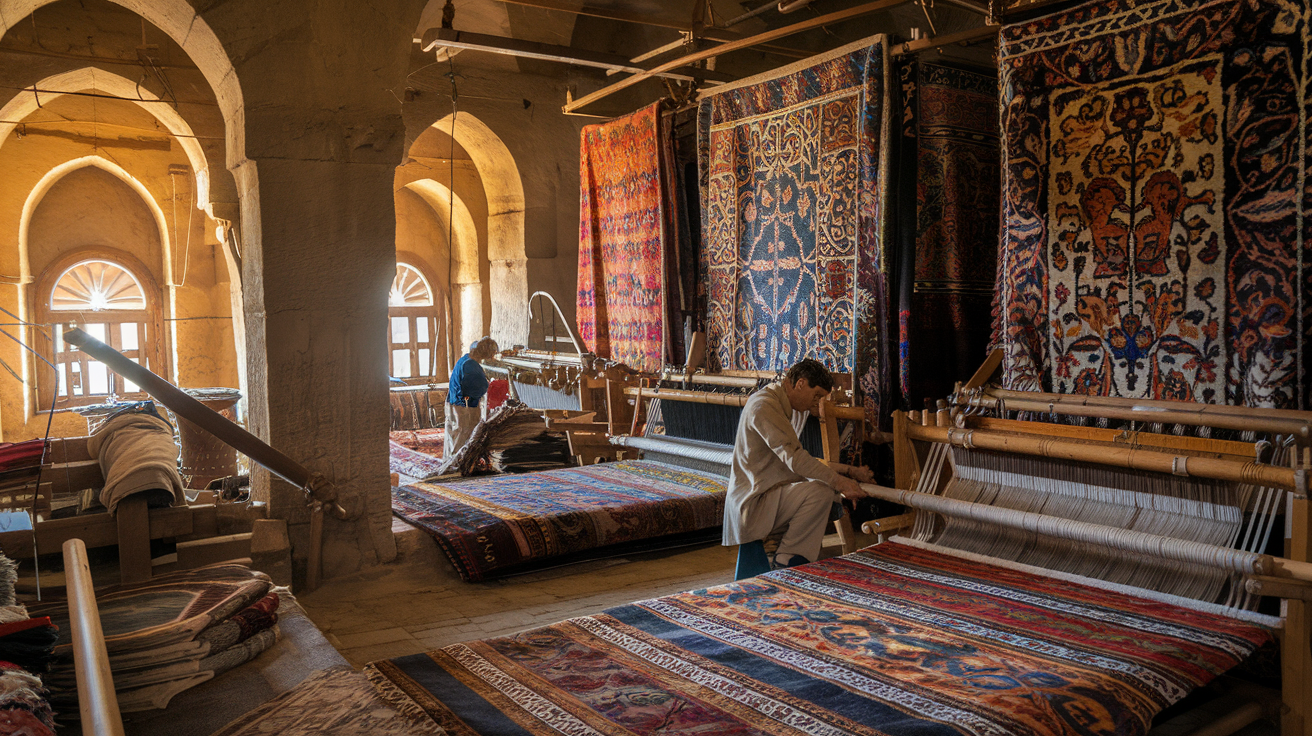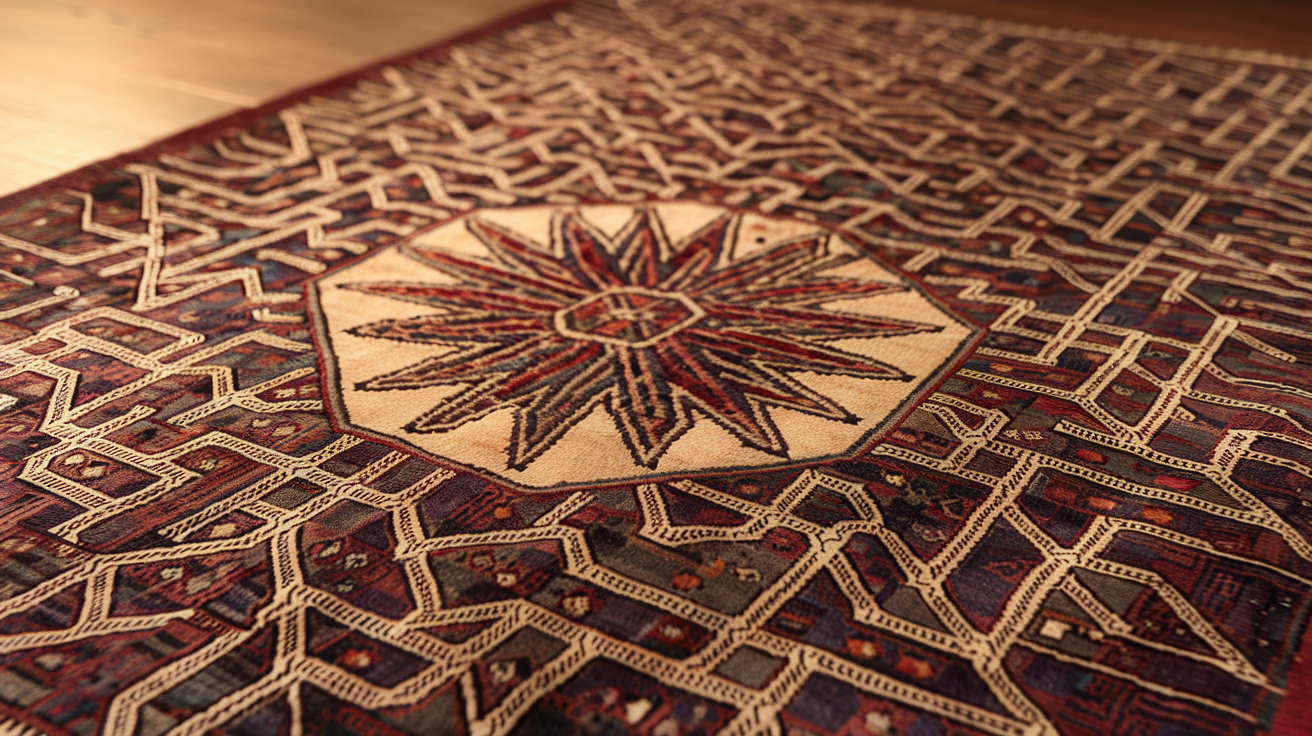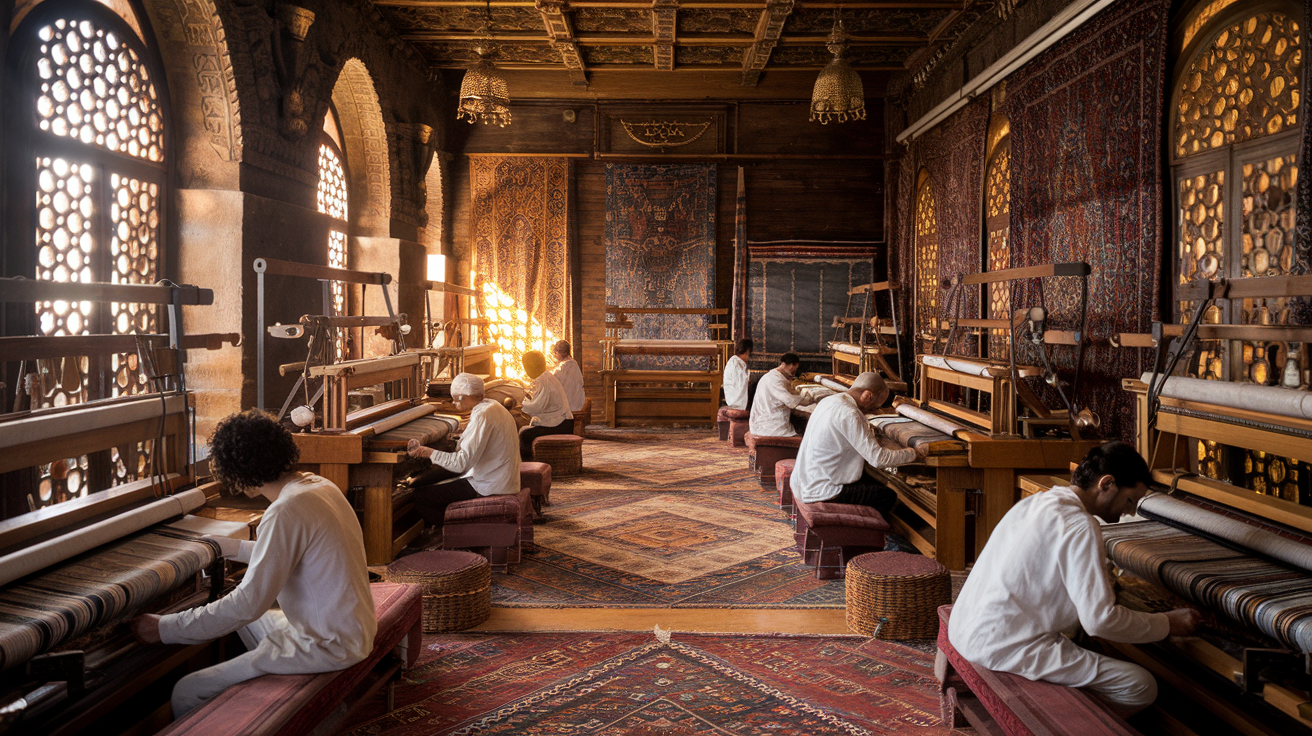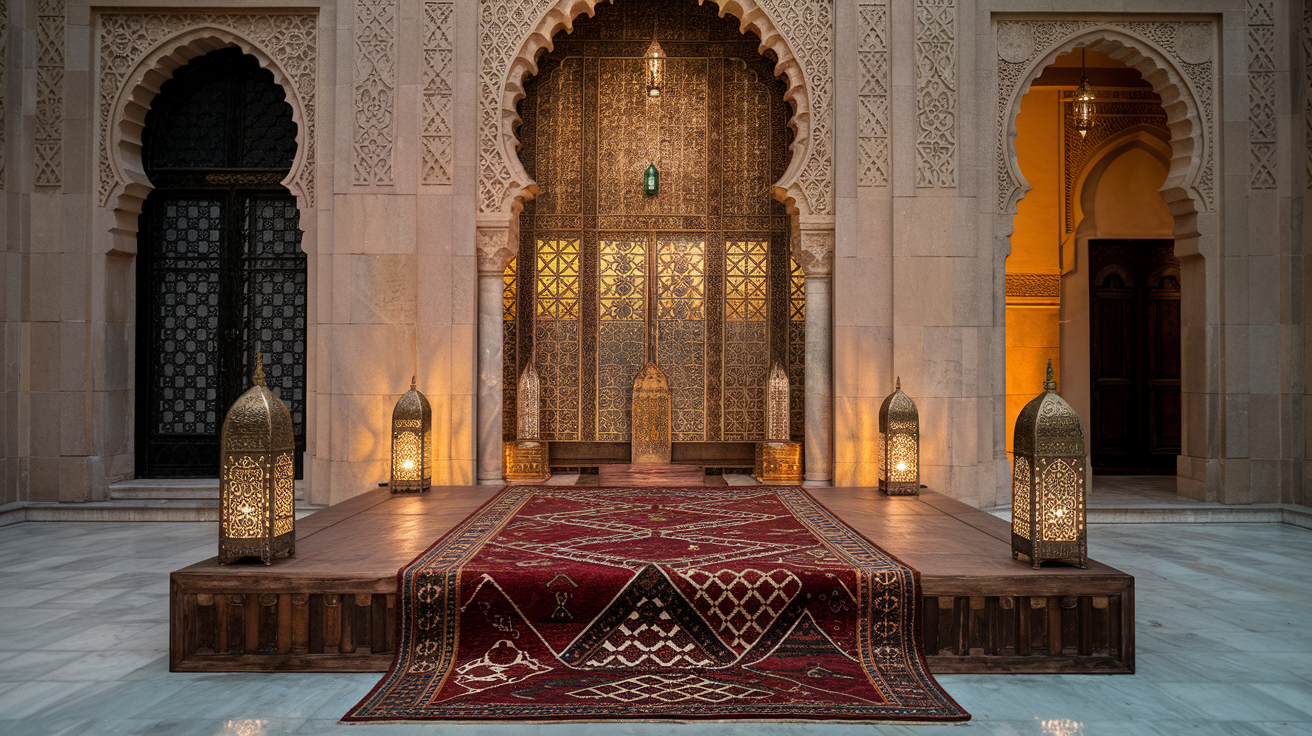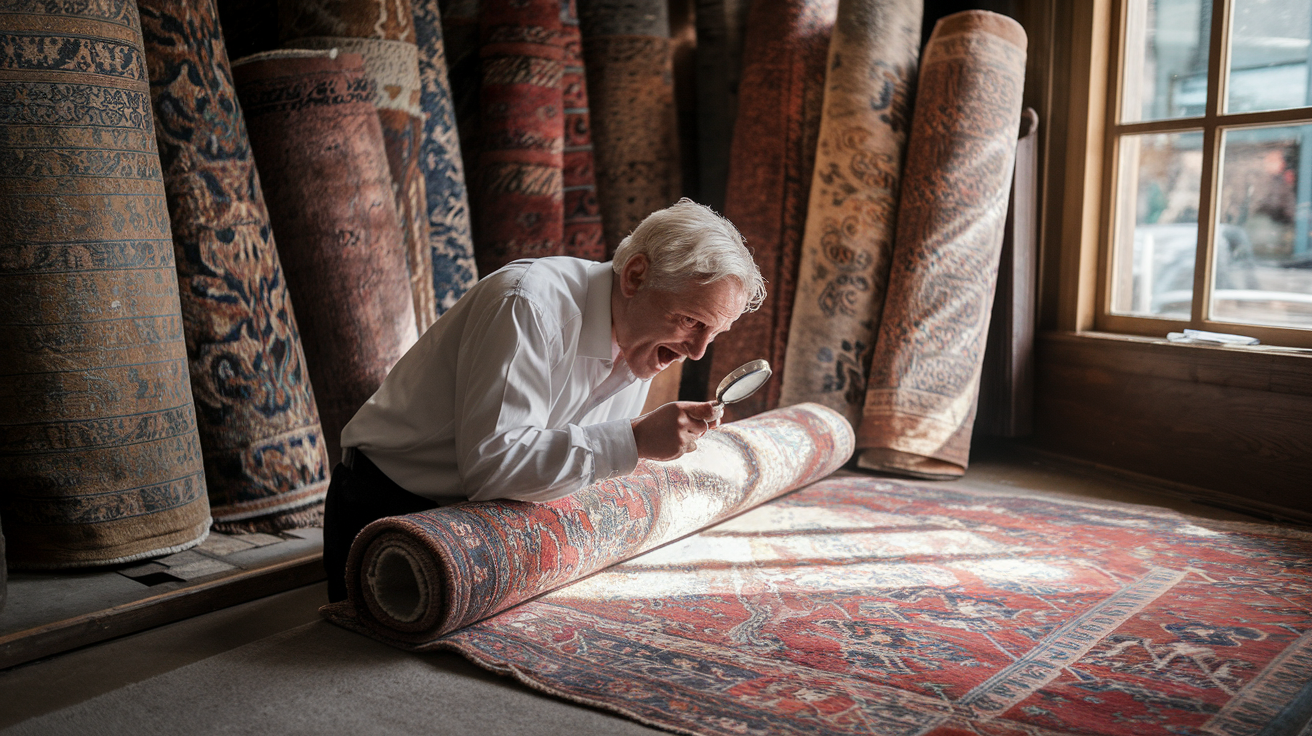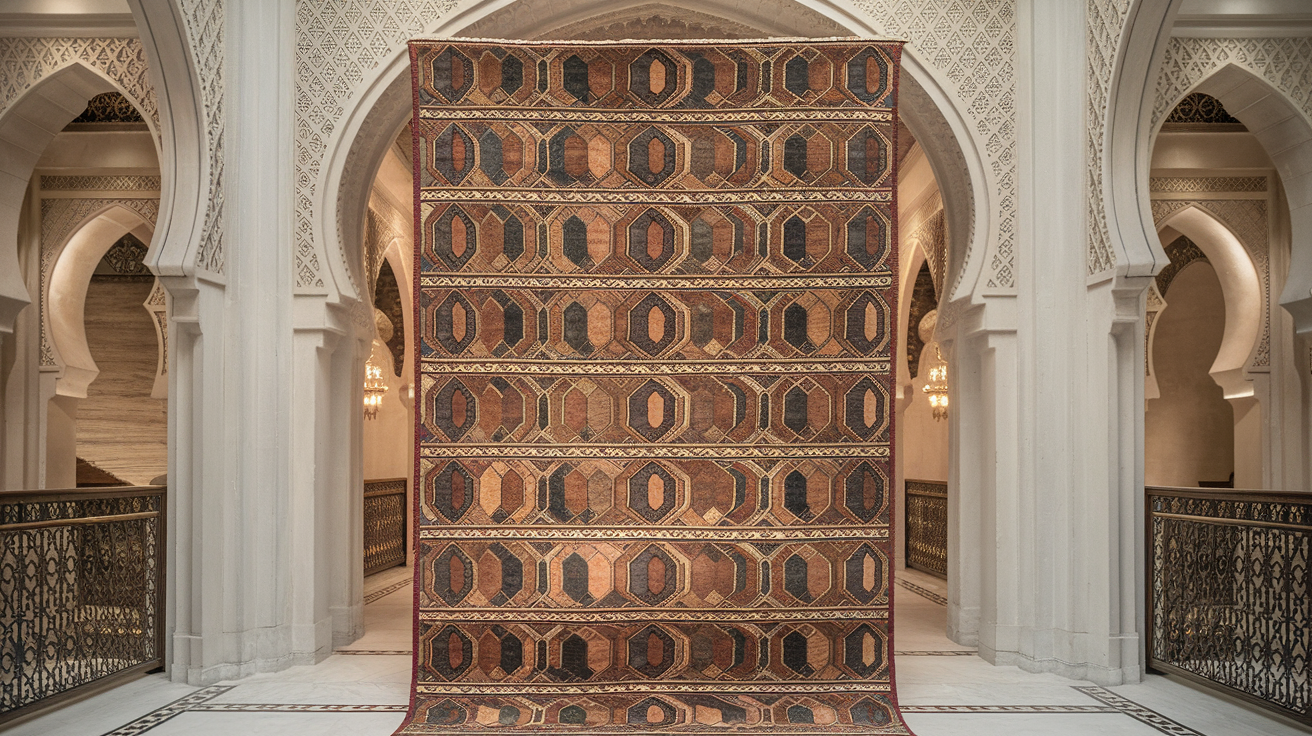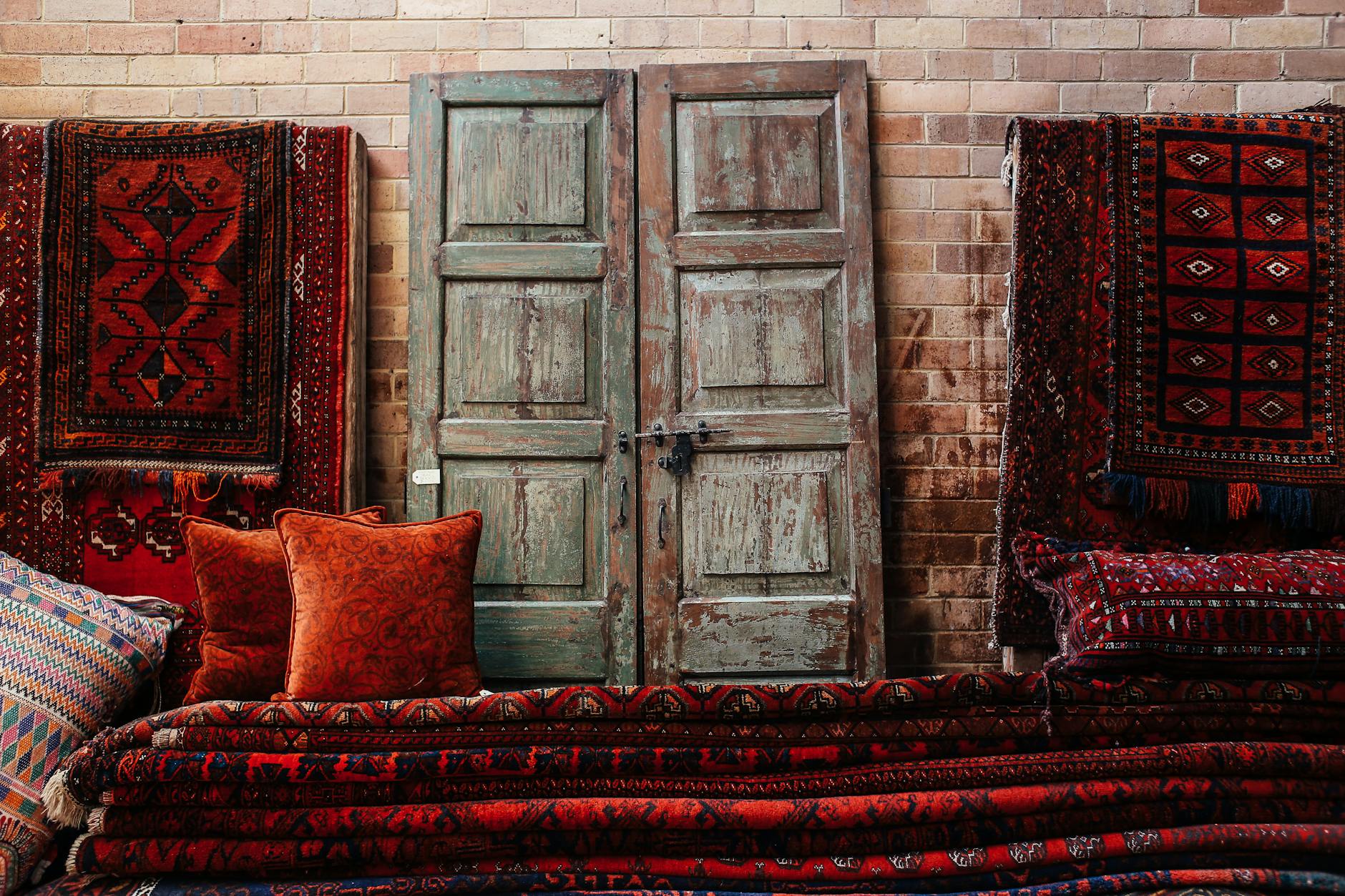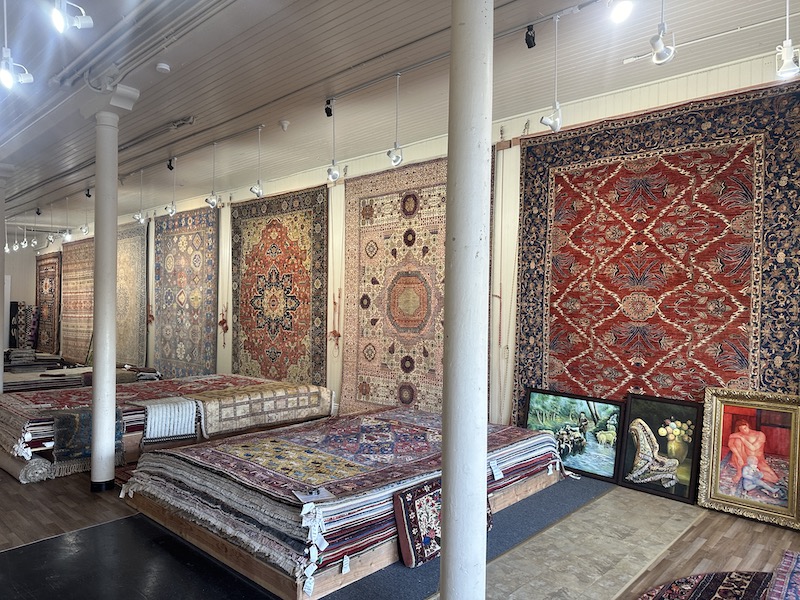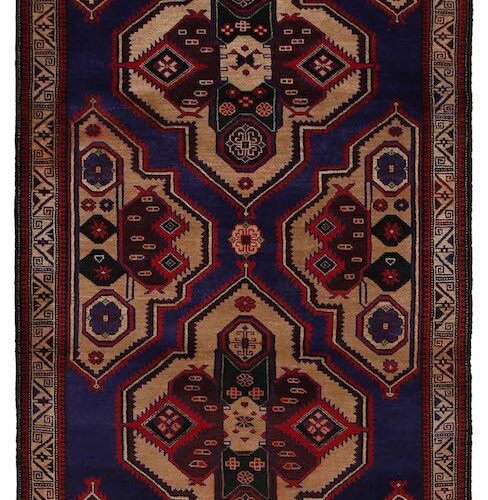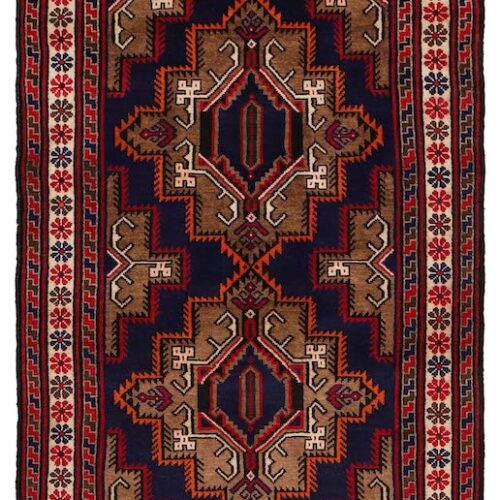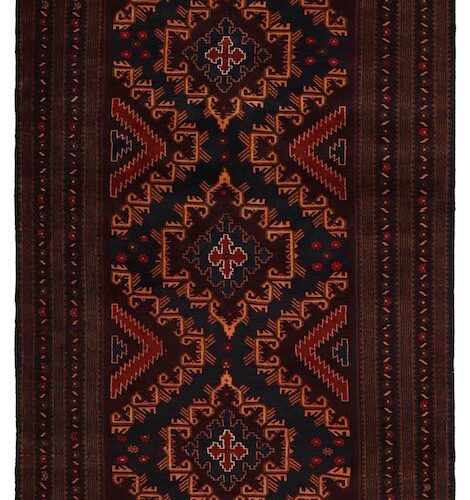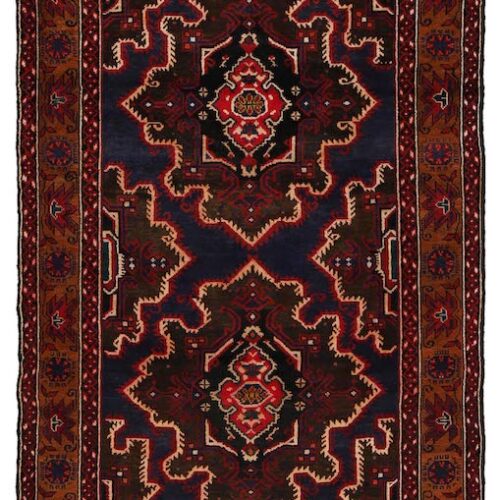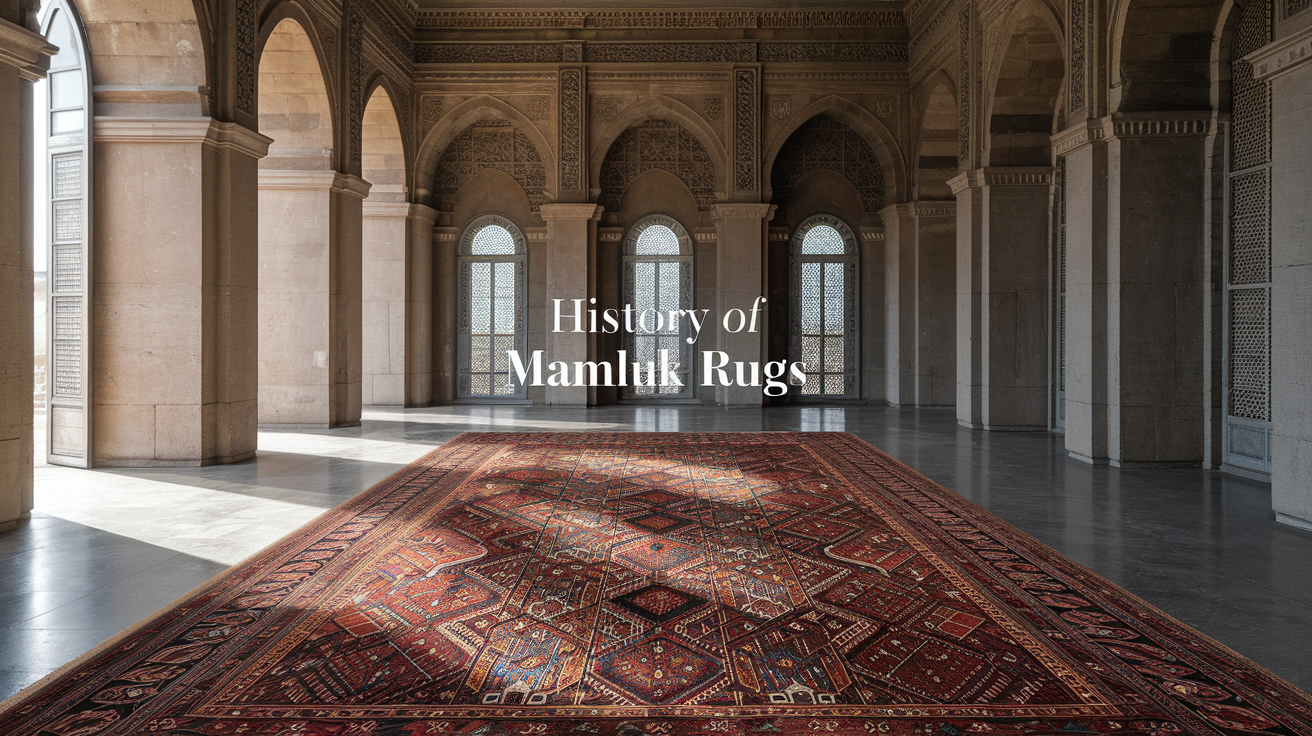
History of Mamluk Rug: A Timeless Masterpiece of Oriental Artistry
Have you ever marveled at the intricate beauty of a rug that seems to tell a story from centuries past? 🕌✨ Enter the world of Mamluk rugs, a fascinating chapter in the rich tapestry of Islamic art and history. These exquisite floor coverings, with their mesmerizing patterns and vibrant colors, are not just decorative pieces but living artifacts of a bygone era.
Imagine yourself transported to the bustling streets of medieval Cairo, where skilled artisans weave together threads of silk and wool, creating masterpieces that would adorn the palaces of sultans and the homes of the elite. The Mamluk rugs, born in this golden age of Islamic craftsmanship, carry within their fibers the stories of a powerful dynasty, cultural exchange, and artistic innovation. But what makes these rugs so special, and why have they captured the imagination of collectors and historians alike for centuries?
Join us on a journey through time as we unravel the captivating history of Mamluk rugs. From their mysterious origins to their distinctive features, from their heyday to their decline and rediscovery, we’ll explore how these magnificent textiles have left an indelible mark on the world of art and design. 🧵🎨
Origins of Mamluk Rugs
The Mamluk Sultanate: A brief overview
The Mamluk Sultanate, which ruled Egypt and parts of the Levant from 1250 to 1517, was a unique and powerful Islamic empire. Originally slave soldiers, the Mamluks rose to power and established a dynasty known for its military prowess, architectural achievements, and artistic contributions.
Development of the unique Mamluk rug style
The Mamluk rug style emerged as a distinctive art form during this period, blending influences from various cultures:
- Persian techniques
- Turkish motifs
- Egyptian aesthetics
This fusion resulted in a unique style characterized by:
- Intricate geometric patterns
- Vibrant color palettes
- High-quality materials
Influence of Egyptian culture on rug design
Egyptian culture played a crucial role in shaping Mamluk rug designs:
| Egyptian Influence | Manifestation in Mamluk Rugs |
|---|---|
| Ancient symbols | Incorporation of lotus flowers and papyrus motifs |
| Islamic geometry | Complex, interlocking patterns |
| Local flora | Stylized representations of native plants |
The rich cultural heritage of Egypt, combined with the Mamluks’ appreciation for luxury and craftsmanship, resulted in rugs that were both visually stunning and culturally significant. These rugs not only served as floor coverings but also as symbols of power and prestige within the Mamluk court.
Distinctive Features of Mamluk Rugs
Geometric patterns and motifs
Mamluk rugs are renowned for their intricate geometric designs, characterized by complex patterns that often feature:
- Hexagons
- Octagons
- Stars
- Medallions
These patterns are meticulously arranged to create a mesmerizing, kaleidoscopic effect. The symmetry and repetition in Mamluk rug designs reflect the Islamic artistic tradition of abstract ornamentation.
Vibrant color palette
The color scheme of Mamluk rugs is both bold and harmonious, typically including:
| Color | Significance |
|---|---|
| Red | Power, passion |
| Blue | Spirituality, wisdom |
| Green | Paradise, nature |
| Yellow | Prosperity, joy |
These vibrant hues are often set against a backdrop of rich, deep tones, creating a striking visual impact that has captivated rug enthusiasts for centuries.
High-quality materials used
Mamluk rugs are crafted using premium materials, contributing to their durability and luxurious feel:
- Wool: Sourced from local sheep, known for its softness and luster
- Silk: Used for highlights and intricate details
- Natural dyes: Derived from plants and minerals for long-lasting, vivid colors
Innovative weaving techniques
The Mamluk weavers employed advanced techniques that set their rugs apart:
- Asymmetrical knots for increased design flexibility
- High knot density, resulting in incredibly detailed patterns
- Unique pile direction changes, creating a shimmering effect
These distinctive features collectively contribute to the timeless appeal and artistic value of Mamluk rugs. Their geometric patterns, vibrant colors, quality materials, and innovative weaving methods continue to inspire contemporary rug designs and captivate collectors worldwide. As we explore further, we’ll delve into the golden age of Mamluk rug production, which saw these exquisite creations reach their peak of artistic excellence.
Golden Age of Mamluk Rug Production
Peak production period
The golden age of Mamluk rug production reached its zenith during the 15th and early 16th centuries. This period saw an unprecedented surge in both quantity and quality of Mamluk rugs, with artisans perfecting their craft to create some of the most exquisite and intricate designs in carpet history.
| Time Period | Production Volume | Quality |
|---|---|---|
| 15th century | High | Exceptional |
| Early 16th century | Peak | Unparalleled |
Patronage by Mamluk rulers
Mamluk sultans played a crucial role in the flourishing of rug production during this golden age. Their patronage provided:
- Financial support for rug-making workshops
- Commissions for elaborate designs
- Promotion of rug-making as a prestigious art form
This royal backing elevated the status of Mamluk rugs, transforming them from mere floor coverings to highly valued works of art.
Expansion of rug-making centers
As demand for Mamluk rugs grew, production centers expanded beyond the capital, Cairo. Notable rug-making hubs included:
- Alexandria
- Damietta
- Fustat
This expansion led to a diversification of styles and techniques, further enriching the Mamluk rug tradition. The increased production also facilitated trade, with Mamluk rugs becoming sought-after luxury items across the Mediterranean and beyond.
Artistic and Cultural Significance
Symbolism in Mamluk rug designs
Mamluk rugs are renowned for their intricate symbolism, reflecting the rich cultural tapestry of medieval Egypt. These designs often incorporated:
- Geometric patterns representing cosmic order
- Floral motifs symbolizing paradise
- Calligraphic elements with spiritual significance
The use of symmetry and repetition in Mamluk rug designs was not merely decorative but carried deeper meanings related to Islamic philosophy and spirituality.
Reflection of Islamic art principles
Mamluk rugs exemplify core principles of Islamic art:
| Principle | Manifestation in Mamluk Rugs |
|---|---|
| Unity | Interconnected patterns |
| Infinity | Repeating motifs |
| Abstraction | Non-representational designs |
These rugs served as portable works of art, embodying the Islamic concept of beauty in abstraction and mathematical precision.
Impact on other art forms
The influence of Mamluk rug designs extended beyond textiles:
- Architecture: Inspired intricate tile work and stone carvings
- Manuscript illumination: Influenced border designs and geometric layouts
- Metalwork: Inspired decorative patterns on brass and copper objects
The artistic legacy of Mamluk rugs continues to inspire contemporary designers and artists, bridging centuries of cultural expression. Their enduring appeal lies in the harmonious blend of complex patterns and spiritual symbolism, making them not just floor coverings, but true masterpieces of Islamic art.
Decline and Rediscovery
Fall of the Mamluk Sultanate
The decline of Mamluk rugs is intrinsically linked to the fall of the Mamluk Sultanate in 1517. Ottoman forces, led by Sultan Selim I, conquered Egypt, ending the Mamluk dynasty’s rule. This political upheaval had profound effects on the artistic traditions of the region, including the production of Mamluk rugs.
Decrease in production
Following the Ottoman conquest, the production of Mamluk rugs significantly decreased. Several factors contributed to this decline:
- Loss of patronage
- Shifting artistic preferences
- Economic changes
| Factor | Impact on Mamluk Rug Production |
|---|---|
| Loss of patronage | Reduced demand from royal courts |
| Shifting artistic preferences | Ottoman styles gained prominence |
| Economic changes | Disruption of traditional trade routes |
Renewed interest in the 20th century
The 20th century saw a resurgence of interest in Mamluk rugs:
- Scholarly research
- Museum exhibitions
- Auction house sales
- Collector enthusiasm
This renewed attention brought Mamluk rugs back into the spotlight, highlighting their historical and artistic significance.
Contemporary appreciation and collectibility
Today, Mamluk rugs are highly prized by collectors and art enthusiasts. Their unique designs, rich history, and rarity contribute to their value in the art market. Museums around the world showcase Mamluk rugs as prime examples of Islamic art and textile craftsmanship.
Mamluk rugs stand as a testament to the rich artistic heritage of medieval Egypt. From their origins to their distinctive features, these rugs have captivated collectors and art enthusiasts alike. The Golden Age of Mamluk rug production showcased the pinnacle of craftsmanship, while their artistic and cultural significance continues to influence textile design today.
Although Mamluk rugs experienced a decline, their rediscovery has reignited interest in these exquisite pieces. By exploring the history of Mamluk rugs, we gain a deeper appreciation for the intricate artistry and cultural exchange that shaped these magnificent textiles. Whether you’re a seasoned collector or simply an admirer of fine craftsmanship, Mamluk rugs offer a fascinating glimpse into a bygone era of artistic excellence.

